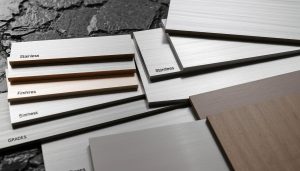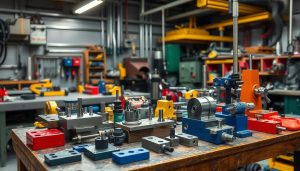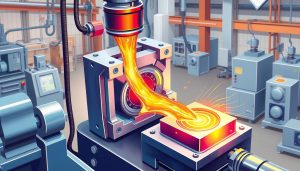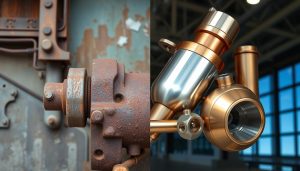In the world of manufacturing, CNC milling components are key to success. They ensure precision and efficiency. But what makes the top CNC milling solutions stand out? Find out in this detailed guide.
What is CNC Milling?
CNC (Computer Numerical Control) milling is a precise and automated way to make parts. It uses a CNC milling machine, a computer that controls the cutting and shaping of materials. These can be metals, plastics, or composites, making parts that are both intricate and accurate.
Overview of CNC Milling Processes
The CNC milling process involves several steps, all controlled by advanced software. A CNC milling machine uses tools that rotate to cut and shape the workpiece. This is done according to a design that’s been programmed beforehand. The process is very consistent, making it possible to create identical parts with high precision.
Key Benefits of Precision CNC Milling
- Enhanced accuracy and dimensional consistency: CNC milling machines can achieve tolerances as tight as ±0.005 mm, ensuring a level of precision that is critical in many industries.
- Increased productivity and efficiency: Automated CNC milling processes streamline manufacturing, reducing lead times and labor costs while maintaining high quality.
- Versatility in material selection: CNC milling can be applied to a wide range of materials, from tough metals to delicate composites, making it a versatile choice for various industries.
- Improved surface finish: The precise control of cutting tools and feedrates in CNC milling results in exceptionally smooth surface finishes, often eliminating the need for additional post-processing steps.
By using computer control and advanced cutting technologies, precision CNC milling is key in automated machining and precision manufacturing. It drives innovation and efficiency in many fields, from aerospace and automotive to medical devices and electronic components.
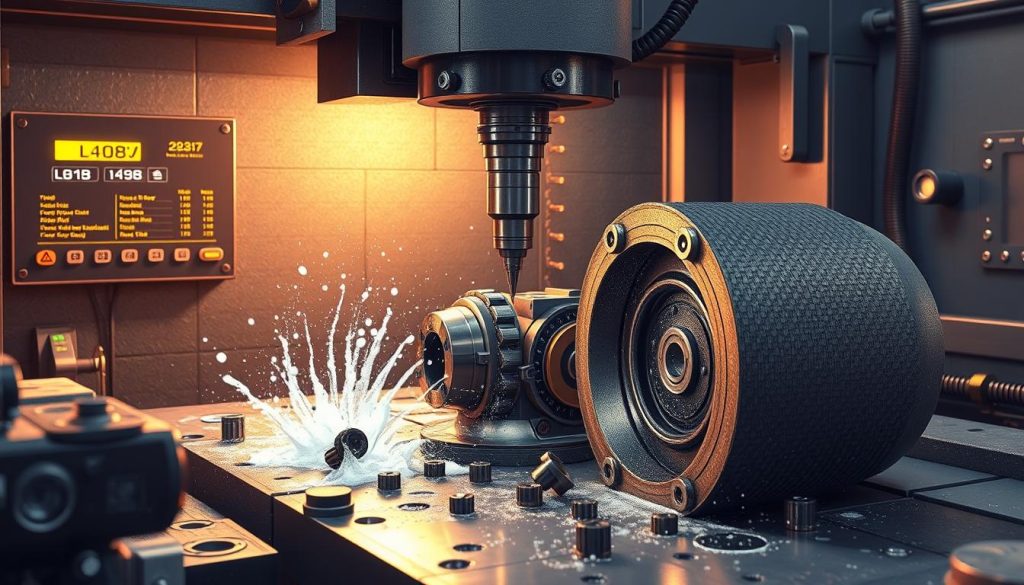
Essential Components of a CNC Milling Machine
Making precise parts with a CNC milling machine needs all its parts working together. The strong frame and base give a solid base. The spindle and axes control the cutting movements with great accuracy.
Frame and Base
The frame and base are the foundation of a CNC milling machine. They must be very rigid and stable. This ensures the CNC machine components are placed accurately.
They are made from top-quality materials like cast iron or welded steel. This makes them strong enough for heavy-duty milling.
Spindle and Axes
The spindle technology at the machine’s heart rotates the cutting tools fast and accurately. It works with linear and rotary axes to move the workpiece or tools precisely. This allows for detailed shapes and features with great control.
Control Panel and Software
The control panel and CNC software are the machine’s brain and nervous system. The control panel lets the operator program and watch the machine. The CNC software turns digital designs into instructions for the machine’s actions.
Together, these CNC machine components make sure the milling process goes smoothly.
Cutting Tools and Tool Holders
The cutting tools and tool holders are the machine’s hard workers. They come in many shapes, sizes, and materials for different needs. Choosing the right cutting tools and tool holders helps get the best finish and accuracy for parts.
“The precision and performance of a CNC milling machine are a direct result of the synergy between its key components.”
How to Optimize CNC Milling Components for Precision
In today’s manufacturing world, CNC milling is a game-changer. To get the most out of it, focusing on optimization is key. This part will cover the main ways to improve CNC milling for better precision and efficiency.
Importance of Calibration and Maintenance
Getting precise starts with careful calibration and regular upkeep. Checking and tweaking the machine’s parts keeps it running smoothly. This ensures the CNC milling system works at its best.
Using strict calibration techniques cuts down on mistakes. It also boosts consistency and keeps tight tolerances for tough jobs.
Choosing the Right Cutting Tools
Picking the right precision tooling is vital for CNC milling. Good cutting tools lead to better finishes, accuracy, and longer tool life. Think about the tool’s material, shape, and coatings to match your milling needs.
Advanced CNC Software for Accuracy
Advanced CNC software is key for precision. Today’s CNC programs have many features, like tool path optimization and live monitoring. These tools help fine-tune milling, lower error chances, and ensure top accuracy.
“Optimizing CNC milling components for precision is a multifaceted endeavor that requires a holistic approach. By focusing on calibration, tool selection, and advanced software, manufacturers can unlock the true potential of their CNC milling operations and deliver exceptional results.”
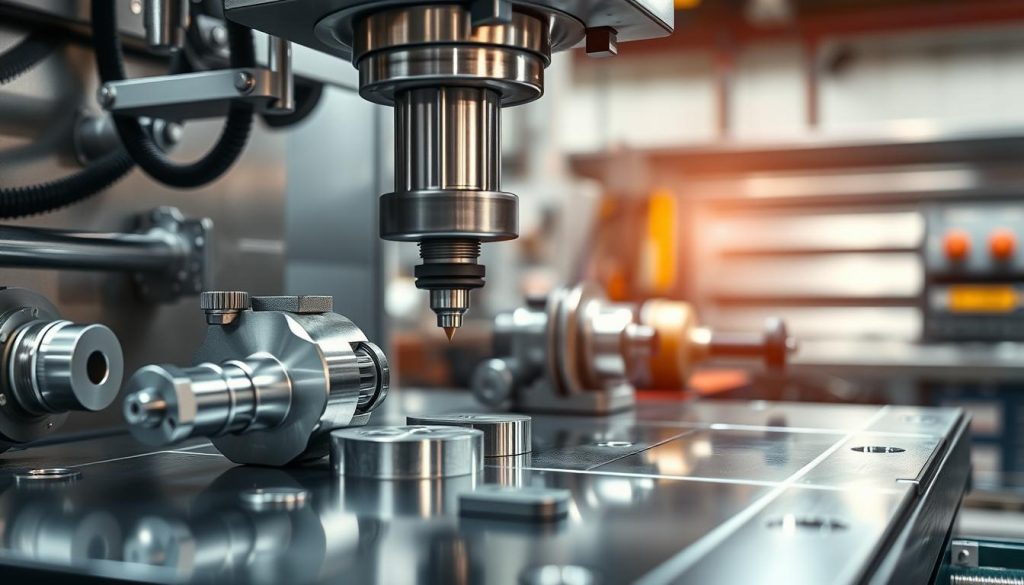
In today’s fast-paced manufacturing, making precise parts is a big plus. By learning these optimization strategies, makers can reach new heights in CNC optimization. This lets them confidently meet the toughest industry standards.
Applications of Precision CNC Milling
CNC milling is a big deal in many fields. It changes how things are made, making complex parts possible. This tech is a game-changer in manufacturing.
Aerospace and Automotive Industries
In the aerospace and car world, CNC milling is key. It makes parts like engine bits and body panels. These parts need to be just right for safety and performance.
CNC milling can make parts with super tight fits and complex shapes. This is crucial for aerospace manufacturing and automotive parts. It’s all about precision here.
Medical Devices and Electronic Components
Medical and electronics fields also depend on CNC milling. It’s used for making medical device components and electronic components. This tech is needed for tiny, detailed parts.
It helps in making small parts for implants and gadgets. This is key for medical and electronic devices.
“Precision CNC milling has revolutionized the way we manufacture critical components across a wide range of industries, from aerospace to medical devices. Its ability to achieve unparalleled accuracy and repeatability has transformed the landscape of modern manufacturing.”
As we need more custom parts, CNC milling will play an even bigger role. It’s a vital tool in today’s manufacturing world.
Shixinproto’s CNC Milling Services
At Shixinproto, we’re proud of our custom CNC milling skills. We offer solutions for many industries. Our top-notch equipment and expert team aim to make components that meet and exceed your expectations.
Customized Precision Milling Solutions for Every Industry
Shixinproto can help whether you’re in aerospace, automotive, medical, or electronics. We listen to your needs and create industry-specific solutions. These solutions improve performance, efficiency, and save costs.
Why Shixinproto is the Ideal CNC Partner
Shixinproto is all about quality and innovation. We’re your go-to for precision manufacturing services. Our advanced facilities, tech, and skilled team ensure every part is accurate and reliable. Reach out to see how our custom CNC milling can boost your business.
